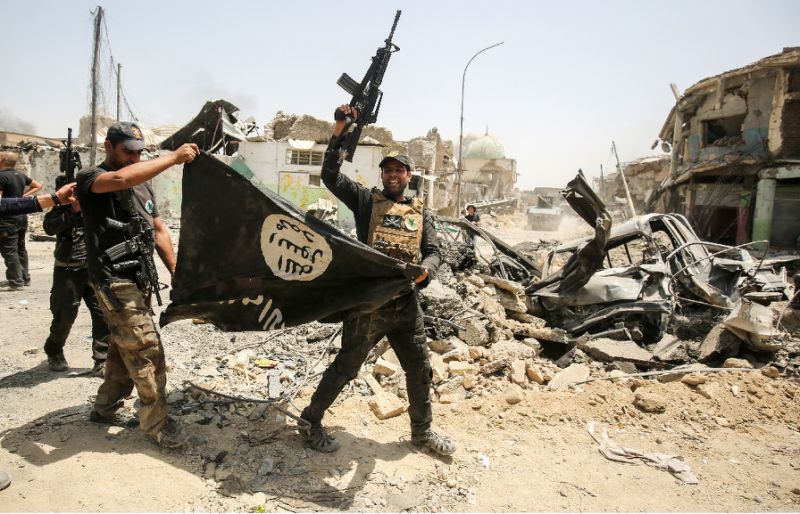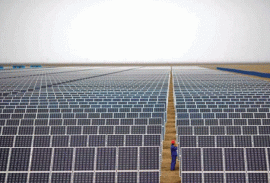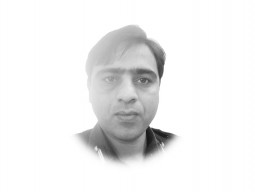
It said a total of more than 200 people have been killed since around 500 Islamic State fighters burst out of the fog shrouding the area in eastern Syria near the border with Iraq to launch their deadly assault on Friday.
According to the Syrian Observatory for Human Rights, 92 of the dead were fighters from the Syrian Democratic Forces (SDF), the Kurdish-led ground units that have spearheaded the US-backed fight against Islamic State in Syria.
Spain deports Pakistani man over ‘Islamic State links’
At least 61 terrorists and 51 civilians, mostly their relatives, also died in the violence which saw US-led coalition air strikes help the SDF recover positions it had briefly lost.
The terrorists used suicide bombers, suicide commandos and sleeper cells in the countryside around their bastion of Hajin to inflict maximum damage, it said.
"It's the largest number of SDF fighters killed (by Islamic State) in a single battle since it was founded" in 2015, said Observatory chief Rami Abdel Rahman.
The SDF, an alliance of fighters from the main Syrian Kurdish militia known as the People's Protection Units and anti-terrorist Arab fighters, rarely releases full casualty figures.
Abdel Rahman said the latest deaths brought to 452 the number of SDF fighters killed since the start of their offensive on the Hajin pocket on September 10.
The terrorists have been putting up fierce resistance from their remote Euphrates strongholds, the last rump but also the hard core of a once sprawling 'caliphate' that straddled Iraq and Syria.
Most of their recent forays and their deadliest attacks have come as a result of weather conditions hampering the coalition's ability to launch air strikes.
The coalition said in a statement on Saturday that its strikes had been limited due to the weather.
Abdel Rahman said local tribal fighters opposed to Islamic state also helped the SDF take back the positions they had lost on Friday.
The Observatory, which relies on a vast network of local sources, said the death toll continued to soar on Sunday as many bodies were discovered.
The Islamic State propaganda agency Amaq had released a statement Saturday claiming to have killed 60 enemy fighters and captured 30.
According to the Observatory, a total of 284 civilians have been killed since the start of the attacks on the Islamic State pocket two and half months ago.
Most of them have died in air strikes, the Britain-based group says. The coalition usually only admits to a fraction of the civilian deaths it is believed to have caused.
The SDF is fighting to retake areas which have no Kurdish presence even as Turkish forces attack its own heartland further north.
Resentment over the failure of their US ally to stop Turkish military action has slowed their advance against Islamic State, whose eradication is proving long and costly.
"The area is mixed between desert and smaller cities like Hajin which makes it tremendously difficult to isolate and contain Islamic State fighters," said Syria analyst Tore Hamming.
He said Islamic State units there could not be surrounded as easily as they were during operations last year against more confined areas like the city of Raqa.
The terrorists have more knowledge and local support than the Syrian government or the Kurds, Hamming said.
He said most Islamic State fighters there were seasoned fighters made even more dangerous by the knowledge they were making a last stand.
"They know that they will either be killed by an airstrike or captured and put into prison if not sentenced to death," said Hamming from the European University Institute.
Kurdish media reported the capture a day before the Islamic State attack of the organisation's second-in-command, but the Observatory could not say if there was any link.
An SDF spokesperson contacted by AFP declined to comment on the reported capture of a man named as Osama Abu Zeid and described as Islamic State supremo Abu Bakr al-Baghdadi's deputy.


1727142053-0/Jacob-Erodi-(3)1727142053-0-165x106.webp)




















COMMENTS
Comments are moderated and generally will be posted if they are on-topic and not abusive.
For more information, please see our Comments FAQ